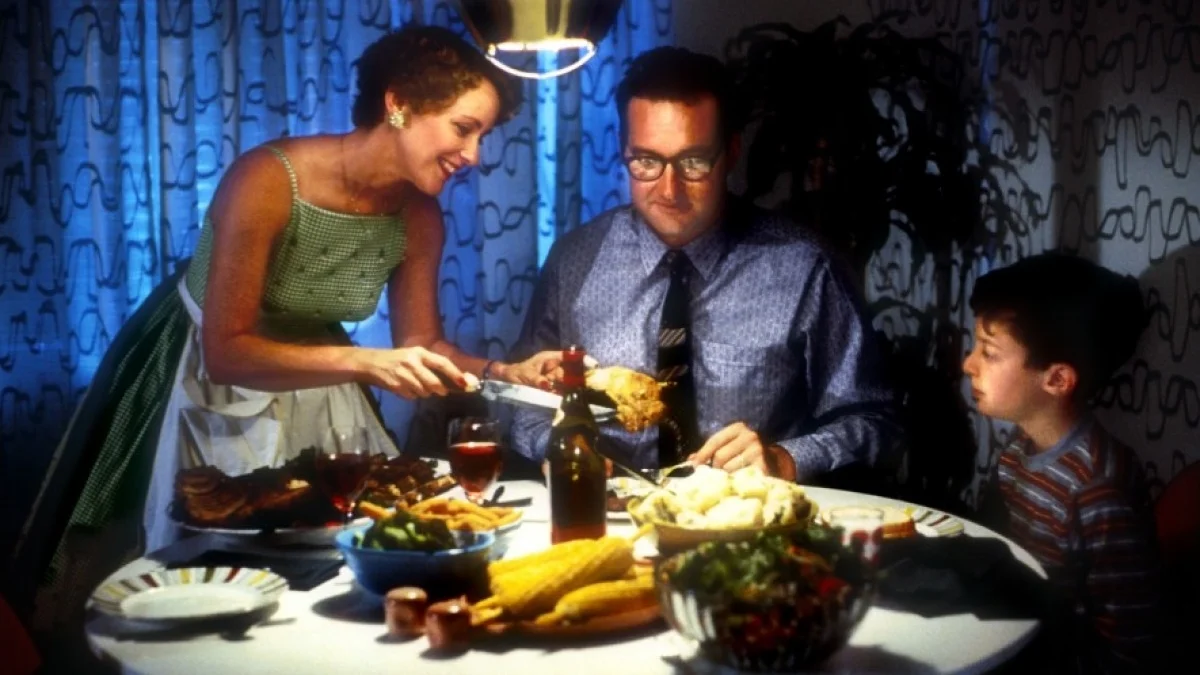Talk Film Summer Camp: Production Design - Boogie Nights (1997)
Glad you could join us for this inaugural Talk Film Summer Camp, where we here at Talk Film Society take a film per day, and dive into what makes each one a great example of one aspect of filmmaking. What we’re hoping to do here is spark a deeper appreciation for film and filmmaking in readers who may want to know more about each facet, so they can approach cinema with a deeper understanding of the invisible work casts and crews put in to tell a story.
Hello, campers! I hope you’ve been enjoying yourselves so far with our series on the different aspects of filmmaking. Today, I’m here to tell you about a position near and dear to my heart (because I wanted to be one, way back when), and that is Production Design. Now, now, settle down. I’m going to explain a little about what Production Design is and then we’ll look at a movie I love that I think nails it in terms of design, and that is Paul Thomas Anderson’s extraordinary Boogie Nights.
Let’s get the actual definition out of the way, shall we? According to The International Film and Television School in Paris, a production designer is responsible for "the overall look of a film that illustrates the setting and visual style of the story.” Production design falls under the umbrella of the way a film looks, including the set design, lighting, costumes, props, and location. Obviously, working closely with the director on making sure their vision is achieved is key.
Now, I’m sure you one of you has a question about the difference between a production designer and an art director. This is a great question because they seem like they could do the same job (and on smaller productions, they do). A production designer is in charge of the entire visual approach of a production. The art director takes this vision and makes sure it comes to fruition. The art director oversees the actual departments (props, costumes, set design) and makes sure they are adhering to the look the production designer has laid out for them. Got it? Good. Let’s get to the movie.
Boogie Nights isn’t vague about where and when it takes place. It takes place, for the most part, in Southern California’s San Fernando Valley between the years of 1977 and 1984. Speaking as someone who was growing up during these years, I can tell you, they nailed the look. The production designer on the film was Bob Ziembicki (Barfly, Wish Upon) and the art director was Ted Berner (Scream 2, Blast from the Past). Together, they manage to capture what living in Los Angeles was like during that time period. I rewatched the movie last night (I’ve lost count how many times I’ve seen it in total) just so I could focus on the look of it. Focusing on the set design and interiors of the houses we see, everything is right. From the wall art, carpets, bedding, and glasses, to the furniture and lamps, it’s all right. Even the small stuff that might not get noticed by some wasn’t overlooked. The glass on the front door of Eddie/Dirk’s house is the same glass we had in our apartment back then. The costumes are spot on, too. My mum’s friend’s dressed like Jack Horner and Amber Waves when they went out to the Moose Lodge on a Friday night. The overall color scheme of the movie was perfect. Moving from year to year, it went from the late '70s heavier colors of chocolate brown and burnt orange to the much lighter pinks and blues of the early '80s.
I don’t know what it is but there was a just a certain look to life back during this time period when one was outside in Los Angeles. It’s difficult to explain, kids, but I’ll try. The sky and atmosphere back then is one that I can remember vividly, even though I was just a young kid. Maybe it was that awful LA smog that did it (remember those Red Flag Alerts?) but the light was diffused and it was just gorgeous. Boogie Nights is able to capture that look for me. Anderson also managed to do it (even better, I think) in Inherent Vice. Poolside at Jack’s place was just like poolside at my friend Chris’ place, tiki bar and all. This movie is a feast for the eyes. It perfectly encapsulates life in Southern California during this era and I encourage all you campers to watch this movie when you go home tonight so you may pay close attention to all the things we’ve talked about today. If you don’t already own it (and why don’t you?) it’s also streaming on Amazon Prime.
Now, let’s all get ready for arts and crafts, kids. In honor of Boogie Nights, we’re making lanyards and learning about how to make your own homemade movies just like Jack Horner!











